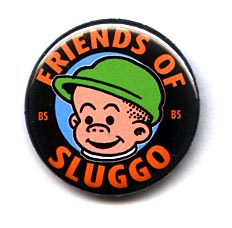
I missed out on responding to Tom Spurgeon's most recent "5 for Friday" questionnaire, Right to Left, or, "Name Five Manga Series You Personally Are In The Midst Of Reading, Whether Or Not The Series Is Ongoing Or Finished." Since the last time I reviewed a random manga title was awhile ago, I thought I'd respond to Spurgeon's quiz here:
The most recent translated Japanese comic I read was Seiichi Hayashi's Red Colored Elegy, a wonderfully evocative existential graphic novel about two young lovers in 1970s Japan, which the comics critic Bill Randall has suggested owes a large debt to gegika pioneer Yoshiharu Tsuge. But this is a stand-alone novel, and one of the better ones I've read this year. In terms of multi-volume stories, however, my reading has generally been limited to adolescent and melodramatic genre fare.
1. Cat-Eyed Boy and The Drifting Classroom, by Kazuo Umezu
The beautifully packaged Cat-Eyed Boy (published by VIZ) tells the story of the titular feline demon, equal parts Tintin, Sluggo, Ditko-era Peter Parker, and Klarion the Witch-Boy, an itinerant monster-fighter who enjoys living in people's attics and defending children and their families (usually against their will) from (sometimes quite disturbing) manifestations of evil. Cat-Eyed Boy is a perfect serial character (the stories originally ran in a kids magazine with a horror edge, a fact referred to in several episodes), with a built in appeal to younger readers centred on the hero's rejection by society as well as a childlike approach to plot and narrative logic, not to mention horrific, "I dare you to look"-style imagery. The stories are disgusting, scary, hilarious, and emotionally powerful. I burned through the two-volume omnibus edition of these books, and the horrific images, humour, and cartooning artistry have stayed with me. The amazing, Willy Wonka-flavoured book design is discussed by Chris Butcher here).
By contrast, I am slowly savouring Umezu's magnum opus, The Drifting Classroom, ordering two volumes at a time and waiting anxiously between installments (I've just finished volume 6). The story, about an entire school of Japanese children mysteriously transported to a post-apocalyptic future, and the resulting Lord of the Flies-style debacle that ensues, is a breakneck, fast-paced horror-thriller about loyalty, familial love, politics, savage murder, giant insect creatures, Plague, and the howling fear of imminent, inevitable dirty death. The original serial nature of the work shows in its overall frantic pace, where events tumble over each other, unchecked, with very little in the way of pacing, reflection or character development. But it is thrilling, sad, and spooky.
2. Dororo by Osamu Tezuka
I've only read the first volume of Vertical's 3-volume collection of this disturbing 1960s Tezuka classic, written in the vein of Kurosawa meets Frankenstein. The story, about a young urchin who teams up with a ronin, who is really a bizarre Pinocchio-like character whose body parts have been stolen by demons, is gross and mesmerizing, with great storytelling and Tezuka's patented cross-genre goofiness. The book design of this series, like most of Vertical's offerings, is beautiful.
3. Nana by Ai Yazawa
I first became aware of Nana, a sort of punk soap opera several levels below, continents and generations removed from Love and Rockets, by flipping through the pages of Shojo Beat magazine at the grocery store a few years ago. The most accessible, recognizingly human, and serious of the many girls' manga series on the market in North America that I've encountered, the story, about two young women trying to make it in the big city, is compelling, humourous, and sharply-drawn. Very much a melodrama, the book packaging of the first two volumes I have is reflective of the intended audience, with muted colors and thoughtful imagery.
4. One Piece by Eiichiro Oda
This serial is one of the very few boys' series I can even stand to look at in Shonen Jump magazine, thanks to the open, fluidly dynamic and cartoony style of writer-illustrator Oda. The story, about a Plastic Man-empowered wannabe boy-pirate in search of a mythical magic coin with his Jason and the Argonauts/Seven Samurai company of super-powered fighters (think Jimmy Olsen meets the plot of Fantastic Four #5, forever), is strictly pulp boilerplate and shows no sign of ending soon (there are over 50 volumes). Moronic and basically for kids, it is nevertheless one of the most coherent and appealing of the popular comedy-adventure fight comics.
5. Death Note by Tsugumi Ohba and Takeshi Obata
I am "in the midst of reading" this series only in the sense that I stopped before finishing the final volume. At the time of first reading, the series just became too cyclical and frustrating, after a pivotal set-back/do-over half-way through where a major protagonist was replaced by a younger variation of himself. The series, about a highschool student who is granted the demonic power to kill people at a distance by writing their name in a notebook, is a tense, page-turner of a gothic thriller, relentless in its pacing, and full of agonizing reversals, hairbreadth escapes, gasp-inducing shocks, moral quandaries, and crazy-explosive Hollywood set-pieces. The Byzantine story and plot mechanics are very nicely complimented by the laser-sharp daring of Obata, a virtuoso cinematographer to writer Ohba's Hitchcock-ian plodding.

